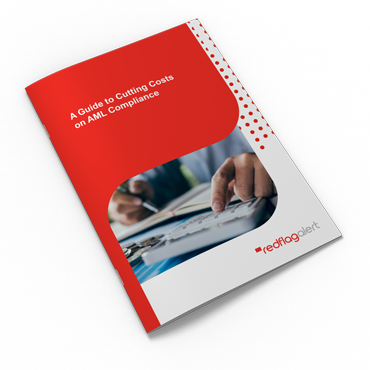Authorities have been making a very public crackdown on money launderers in the last few years. Currently eight people are on trial suspected of laundering over £260 million through the accounts of a Bradford based goldsmiths and UK authorities seized £114 million in cryptocurrency as part of a global money laundering scheme in 2021.
This all part of a bigger picture, as authorities’ investigative powers increase and the crackdown on financial crimes gathers pace. In particular, the focus is growing on professional firms which are seen to be complicit in - or complacent over - money laundering.
I’m always surprised when talking to professionals in the UK how often they are ill-informed and unprepared to fulfil their growing obligations and the threat of money laundering threatening their business.
This seems to be born from a lack of understanding of how commonplace and ingrained money laundering is in the UK (and global) economy, with £88 billion being laundered domestically each year. A great place to start developing this understanding is to look at money laundering methods that criminals use.
Money Laundering Methods
Ever wondered, "how do drug dealers launder money?". We will start with an example of some of the money laundering methods used to turn drug money earned in the UK from physical dirty money to legitimate (or at least seemingly so) wealth in bank accounts and purchased assets.
The usual model for drug dealing is willing or indentured street level dealers ultimately selling for a drugs boss, usually with a few organisational levels between them. The payment will be taken in cash and this will eventually be given to the drugs boss. So how do drug dealers launder money?
They now have a problem, they are in the possession of a large amount of cash, for a successful dealer this will be in the millions, but this can’t be spent without alerting the authorities, money must be spent defending it from other criminals and if the police ever find it they will seize it all. This is where money laundering comes in.
Before we continue, it is essential to understand that money laundering is an expensive affair and facilitators are handsomely rewarded for their efforts. The fortune that can be made in facilitating money laundering methods is the reason that complex, sophisticated and readily available systems can exist. Criminals accept this as part of the process, after all £1 million you can spend is better than £2 million you can’t.
The first step is to turn the physical notes into digital money in the bank. Our drugs boss decides they want to reduce their risk of detection by employing two money laundering methods.
First they will employ a professional money mule to smuggle half of their cash out of the country to their contact in a country with low regulation (and usually high corruption) to deposit the money in the bank, thus securing its entry into a banking system minus the money mule’s cut and operational costs.
Secondly, they will wash the remaining dirty money through a cash business within the UK, such as a carwash. The aim here is to falsify invoices to make it seem as if the business earned more money than it actually did. To do this they can put higher invoices through the register than they actually charge customers, for example they will charge £1 for a carwash but will state that they charged £10 and deposit the legitimate £1 and £9 of dirty money in the bank. They can also simply state they washed more cars than they did, create phony invoices and deposit dirty money in the bank.
Now the dirty money has entered the financial system the next step is to move it through a series of complex transactions to hide the original source. This can be thought of as similar to the game where a ball is hidden under one of three cups and they are then shuffled; the more cups and the more stages to the shuffling the harder it is to find. Usually the web of transactions will cross borders and involve the accounts of dummy, or shell businesses set up to obfuscate the true owner of the money.
The money is now essentially clean and can be spent freely. It is incredibly hard for authorities to trace cleaned money back to its original source, especially if it has crossed borders and moved through different banking systems where they do not have jurisdiction.
This video from the BBC gives an excellent overview of the process and also highlights how it’s often the middlemen who get caught, while the top dogs evade detection.
Money Laundering Methods: Stages and Techniques
Our example showed just a few of the money laundering methods that can be employed; but regardless of the money laundering scheme they will always have the same 3 stages:
Placement – This involves getting the physical dirty assets into a banking system where it is effectively digital money.
Layering – This involves moving the money through a complicated series of transactions to hide the original source.
Integration – This is where the money has been cleaned and can now be spent freely
Money laundering schemes vary in complexity, especially at the layering stage, and the digital age has made it much easier to layer dirty money, as it can all be done from a desk.
Below we will look at a few popular techniques of placement and layering:
Smurfing – This is where the money is split into many smaller sums and eventually consolidated via multiple transactions. This can be done both in placement and layering. It is currently a popular method of placement with drug dealers, they have their clients each deposit money (under the amount where the bank would automatically run a check) into their personal bank accounts and then transfer it through to an account under the dealers control. For layering the money is split into chunks which follow their own route through the money laundering scheme to the eventual destination.
Placement via a casino – A traditional money laundering method. Criminals will enter a casino and buy chips with dirty cash. They will then gamble with a small portion of the chips and once they have been there long enough to avoid suspicion they will cash the chips out. Essentially they have swapped dirty notes for clean ones.
Layering via an online casino – This is similar to placement via a physical casino but requires the money to already have entered a banking system. Criminals can buy virtual chips and subsequently cash out, again effectively swapping the money in their account and adding another layer to the movement of money. Money launderers will also enter into a game such as poker, where you play against other people, against other members of the scheme. They will then play as normal and at games end the money will have been randomly redistributed across different accounts involved in the scheme.
Layering via cryptocurrency – one of the newer money laundering methods, money launderers will buy a cryptocurrency from an online exchange and sell it back for real cash at a different online exchange. These exchanges are often based in countries with low regulatory oversight where large transactions won’t be investigated.
Placement and layering via bank – This is usually done as part of money laundering schemes moving money totalling in the many millions to billions and usually involves the ill-gotten gains of billionaire kleptocrats and despots. They will either own or have significant connections in a bank, usually in their home country. They can then place money in that bank freely and run complex layering schemes passing through that bank multiple times without having to worry about the bank alerting any authorities to suspicious activity.
These are just a few of the money laundering methods used to wash dirty cash and new techniques are constantly being discovered and employed. It should be noted that money launderers tend to be highly skilled professional criminals operating with a veneer of legitimacy operating in a highly lucrative, albeit illegal, sector.
Money Laundering: The Big Picture
Now we have looked at what a money laundering scheme might looked at we should consider who is laundering money in the UK. In the popular mindset , inspired by film and television, money laundering is reserved for drug dealers and gang bosses. Whilst it is true that they will launder money, in quantities large enough they will likely surprise you, traditional criminality does not make up the majority of the £88 billion laundered through the UK each year.
This comes from billionaire kleptocrats, dictators and despots who transfer hundreds of millions to billions of stolen wealth from their home countries.
You might question why they would need to move their money from the countries where they are almost above the law. The main reasons are that the currencies can be unstable in these countries and governments tend to have more authoritarian powers and political favour can be unpredictable. The stability of western economies is what makes them both attractive and vulnerable to money laundering.
Sadly, the UK is one of the money laundering centres of the world, being second only to the USA in amount laundered each year, with London being the number one city globally.
As explained at the beginning of this article, the UK government is cracking down on money laundering and has released strong laws around businesses responsibilities in the fight against money laundering. This laws have purposely severe punishments and often result in jail time or huge fines. Bizarrely, most professionals are not aware of their compliance responsibilities, that each of us is personally liable for our role and that those that are unaware of their role in money laundering, through lack of due diligence, will be punished as if they were complicit.
Your AML Obligations
To understand your obligations you must understand the view that UK anti-money laundering legislation takes as to professional involvement in anti-money laundering activities.
It defines itself as a joint enterprise between the public and private sector, with the private sector being both the first line of defence and main informant against money laundering methods.
It also assumes and requires a professional working in an industry with a risk of exposure to have the competence, training and diligence to be able to recognise signs of potential money laundering in their business dealings and to have systems in place to carry out due diligence on their business deals. This means that if you are found to have facilitated money laundering but were unaware of having done so, unless you can prove you carried out a sufficient level of due diligence you will be prosecuted as if you were complicit and will most likely face professional disqualification.
Should you ever suspect money laundering you should submit a Suspicious Activity Report to the National Crime Agency or report it to the police.
There are various pieces of regulation that legislate businesses obligations towards anti-money laundering, some of which comes from industry regulatory bodies, such as the FCA
A brief, but not complete, overview of these obligations is: you are required to carry out a risk based approach towards customer due diligence on a case by case basis, you are required to have sufficient internal processes in place to include this due diligence in your day to day processes, you are required to clearly define and record these process so they can be presented upon request and you are required to have sufficient tools available to perform due diligence.
Red Flag Alert Can Help Having a reliable piece of AML software is essential for meeting your legal obligations and protecting yourself from money laundering.
Red Flag Alert’s AML suite is here to help. It offers a full range of KYC (know your customer), AML solutions with Global PEP’s (politically exposed persons), sanctions and adverse media. Our cutting edge digital platform saves you time and money by allowing your customer to submit their ID and photograph via a camera phone, meaning your staff will spend less than a minute performing each check.
For more information on how Red Flag Alert can help you navigate AML regulations and provide peace of mind that your business will remain compliant, Request a trial today





